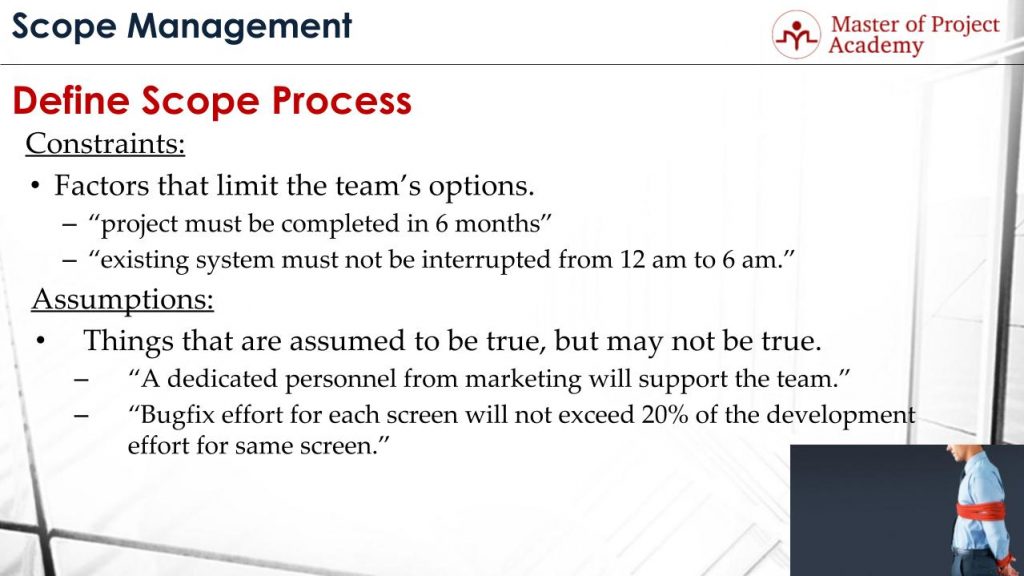We are hearing project assumptions and constraints many times during the project life cycle. According to the PMP certification course, they are important terms in the project planning process. They also play a major role in define scope process. Because in this process the project scope is finalized. And the project scope defines the features of the end deliverables of a project. So naturally, these two terms will be included in the Project Scope Statement which is the main output of the Define Scope process.
Attend our 100% Online & Self-Paced One-Hour Free PMP Training.
In this article, we are going to describe these two terms: project assumptions and constraints. And to illustrate them better for you, we are also going to provide examples. For more detailed explanations and examples, you can consider enrolling in a PMP project management course and train yourself for the PMP Certification exam.

What are the project constraints?
First, we will go over constraints. Project constraints are factors that limit the project team’s options. There are 7 major constraints, and they are Cost, Scope, Quality, Customer Satisfaction, Resources, and of course Time. Naturally, project planning process must be done with taking constraints into account. These constraints can be the project dependencies, or about the schedule, cost, quality, human resource, technical etc.
For instance, “Project must be completed in 6 months!” this is an example of project schedule constraint. Or “Existing system must not be interrupted from 12 am to 6 am”. This is an example of a technical constraint. This constraint requires to not to touch the existing system for 6 hours from 12 am till 6 am. Therefore, when planning project activities, there should not be any activity planned for these slots in a day.

What are the project assumptions?
The dictionary definition of assumption is “a thing that is accepted as true or as certain to happen, without proof.” So the project assumptions are also assumed to be true. But naturally, these project assumptions might not become reality during project execution. Planning is actually doing forecasting of future activities with the information available today. Therefore, making project assumptions is unavoidable during planning.
For instance, “A dedicated personnel from marketing team will support the team” is an example of project assumptions. But during execution, a dedicated marketing personnel might not be available or might be available only 1-2 days a week. And this will affect your project respectively.
Or “Bugfix effort for each developed screen will not exceed 20% of the development effort for the same screen.” This is actually one of the common project assumptions made in software project estimations. But in reality, if there will be lots of bugs after the software is developed, bugfix efforts can exceed 20% and this can cause project delays or the budget may exceed.
We have gone through project constraints and project assumptions and provided examples. A project manager should keep these two terms always in mind during the project planning and executing processes. Because the constraints are the factors that will limit their options during the project life cycle. The assumptions that do not become true, may also affect the whole project.


